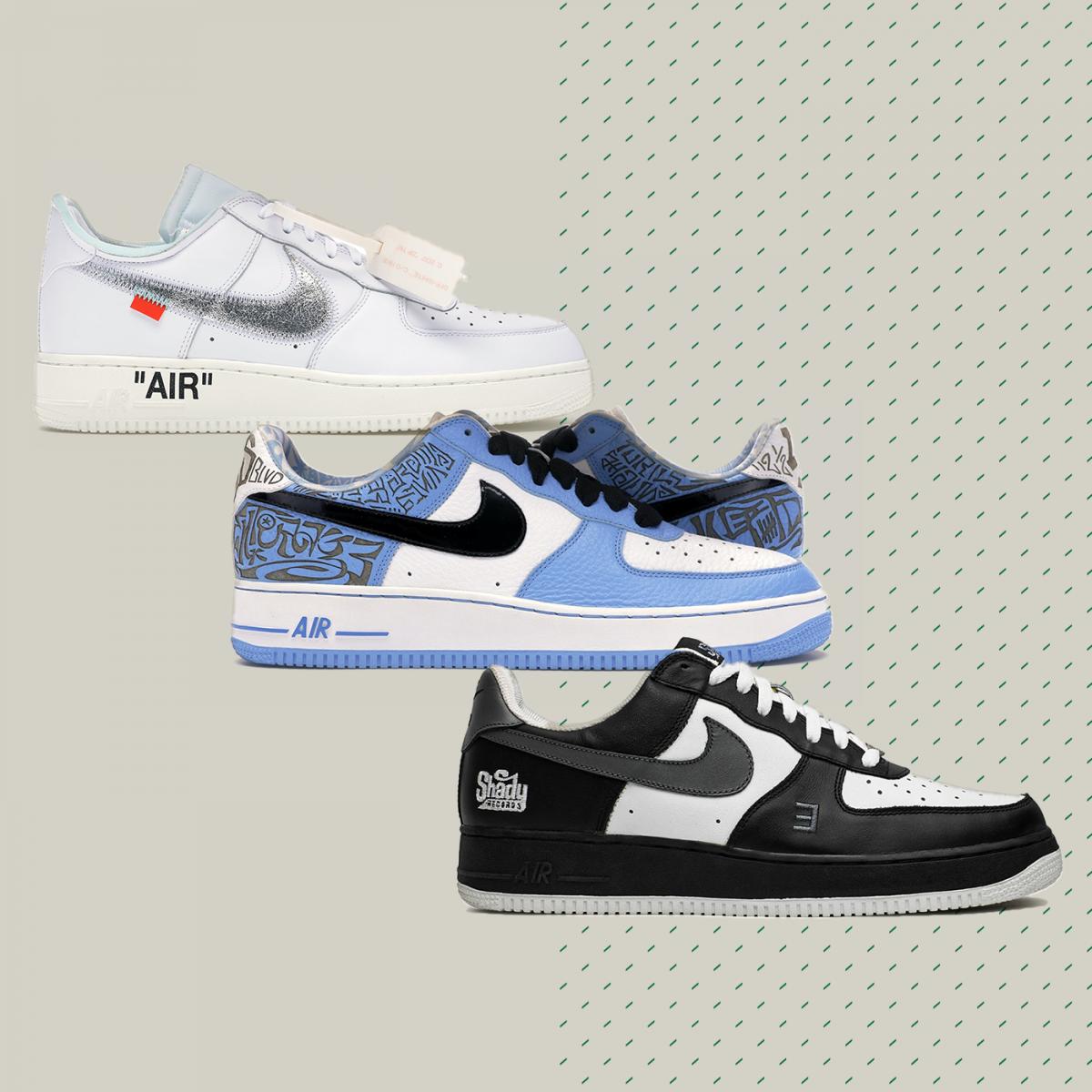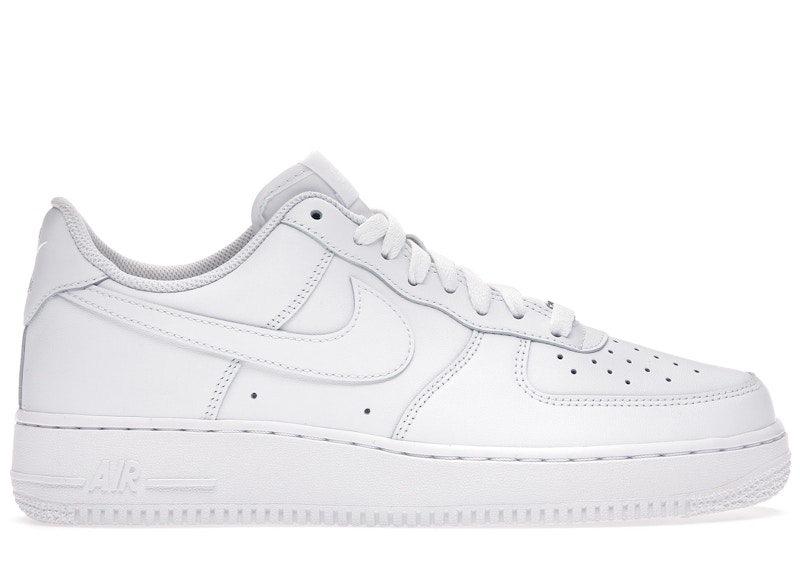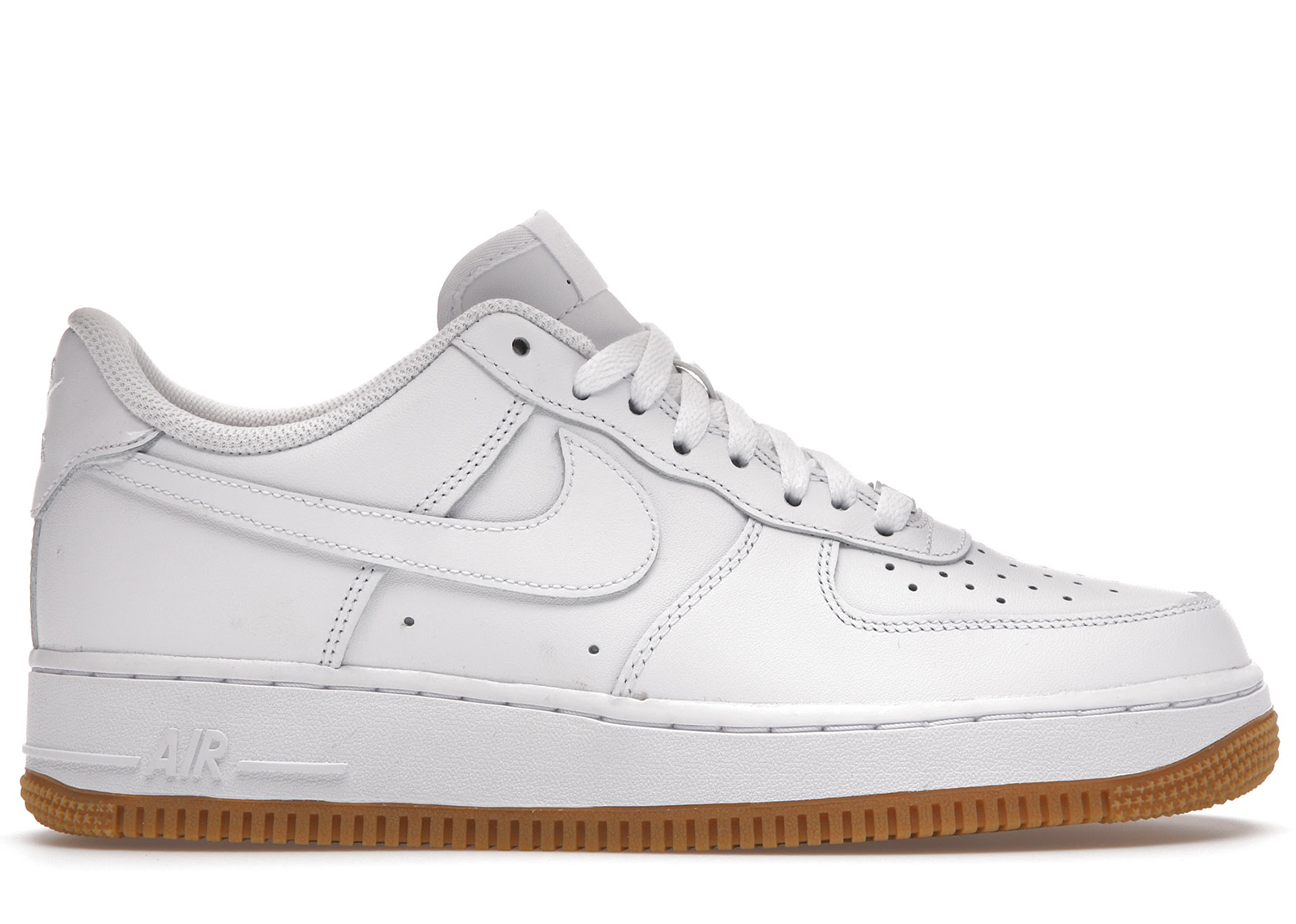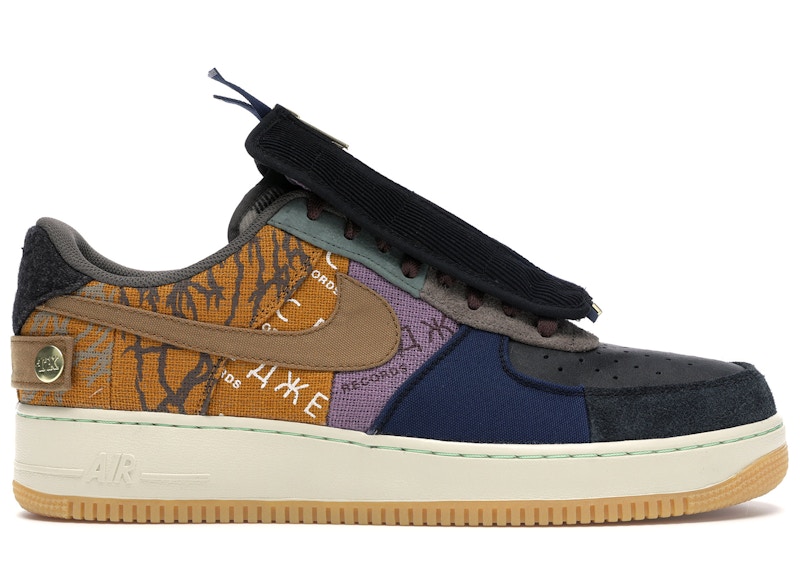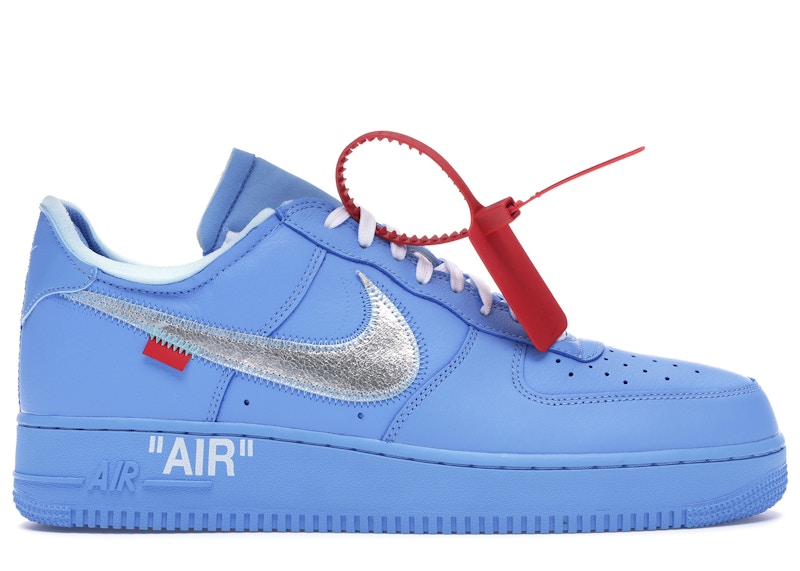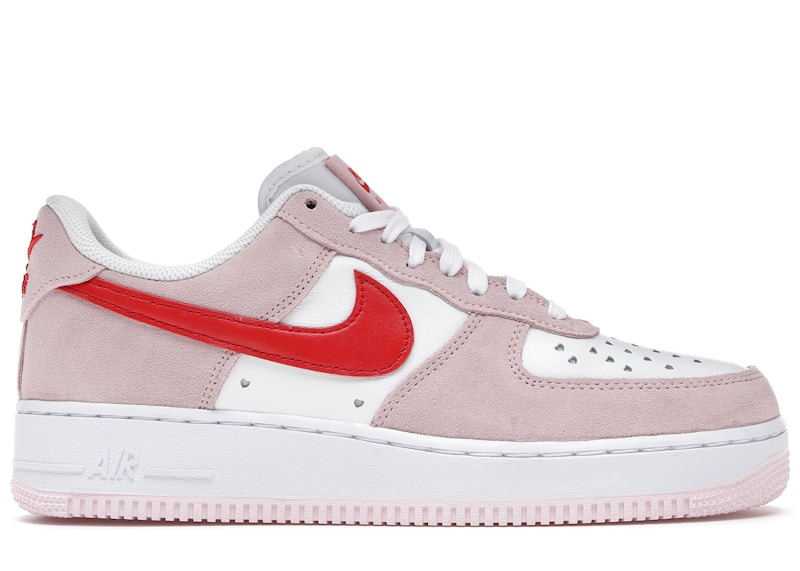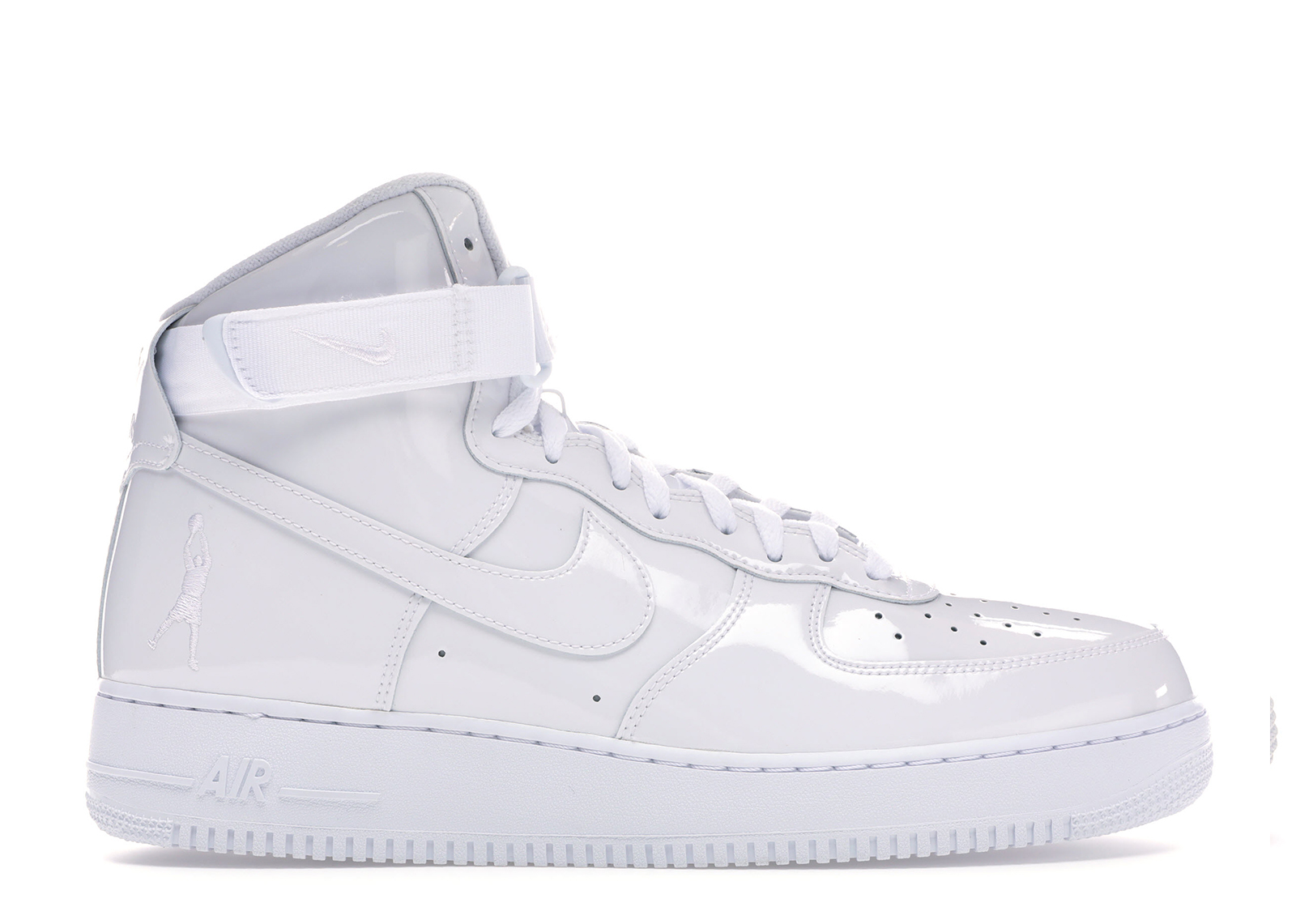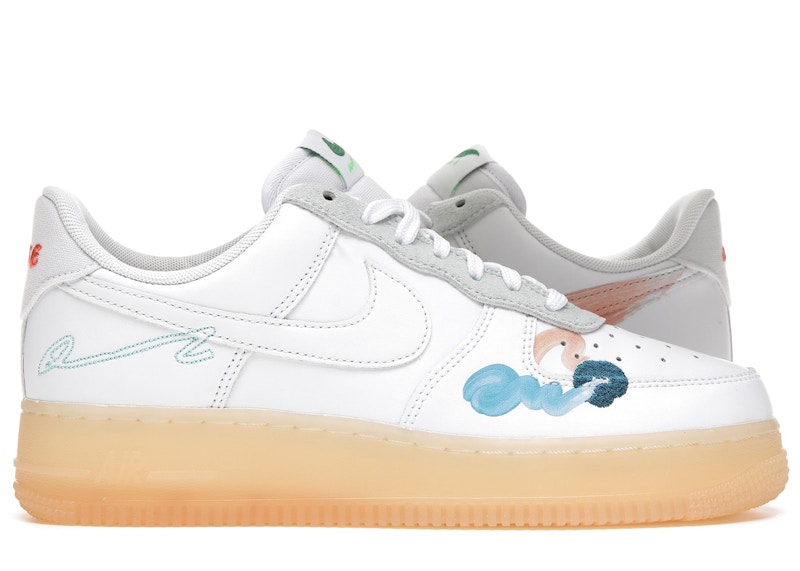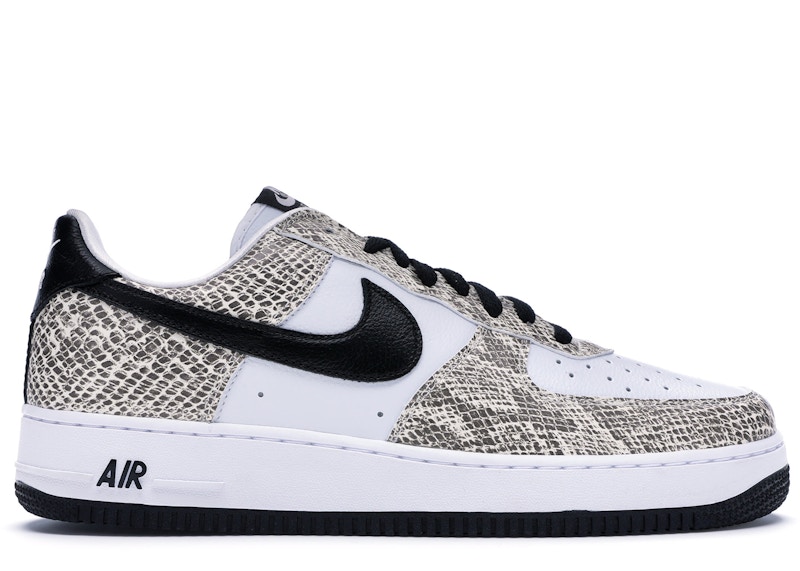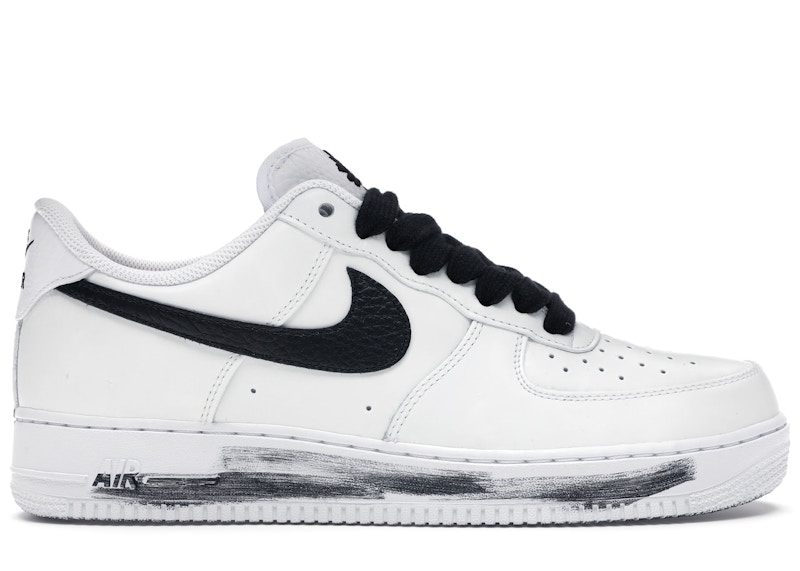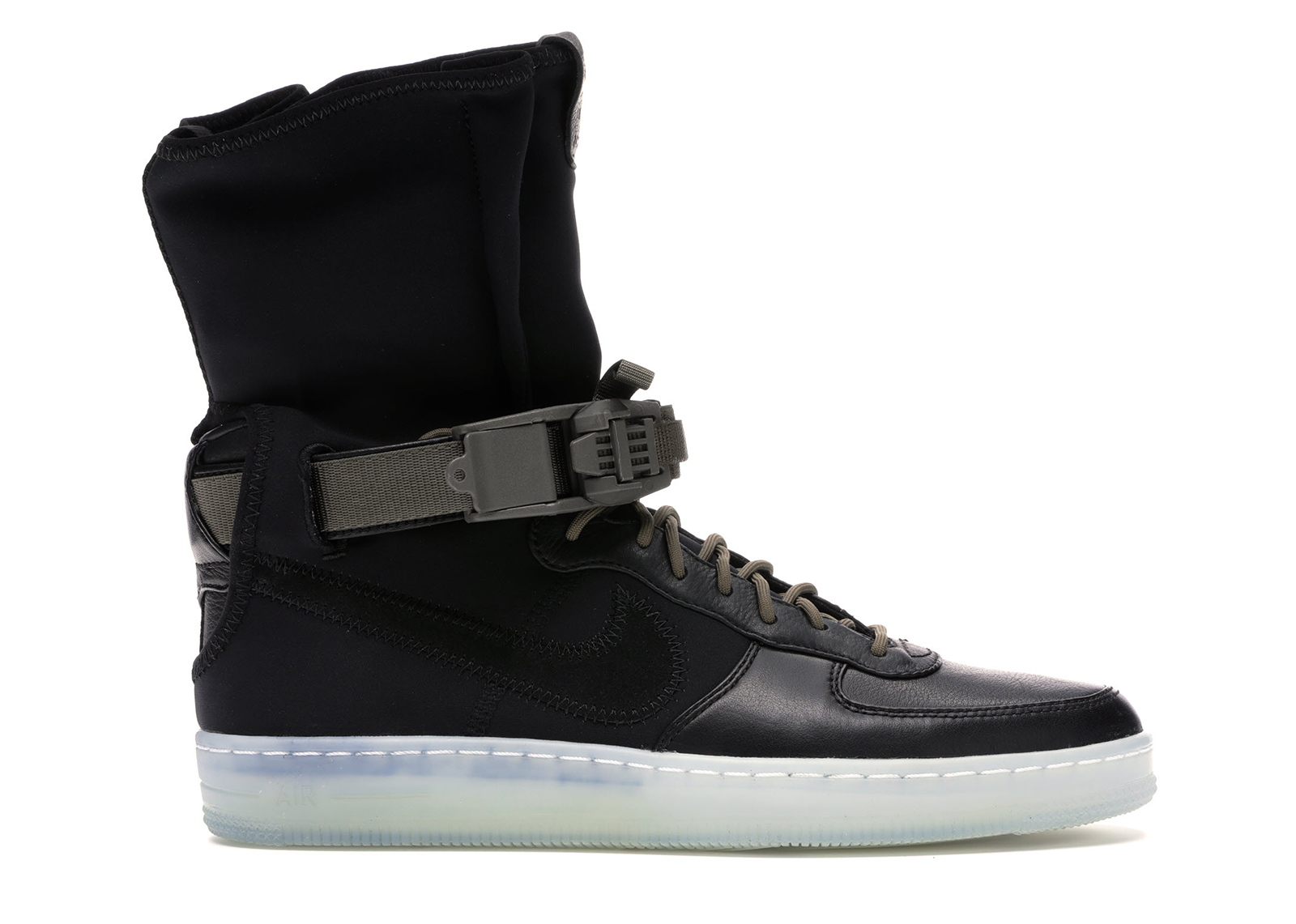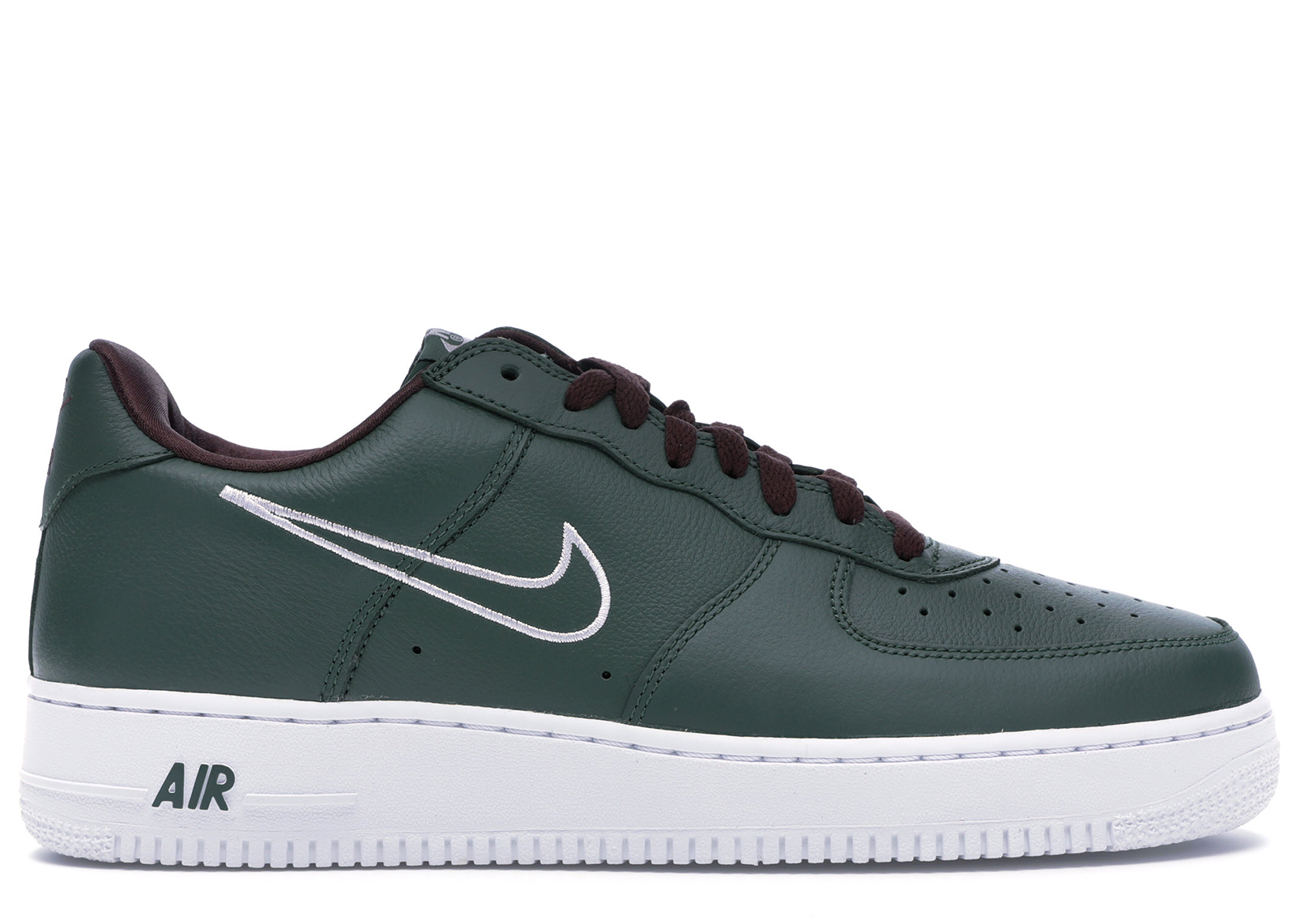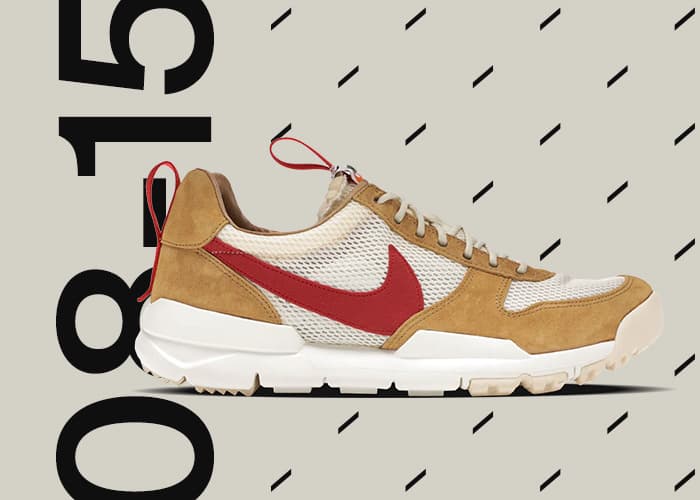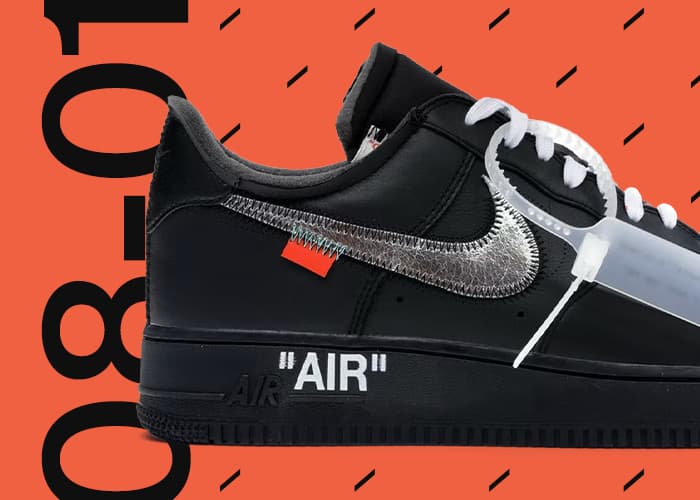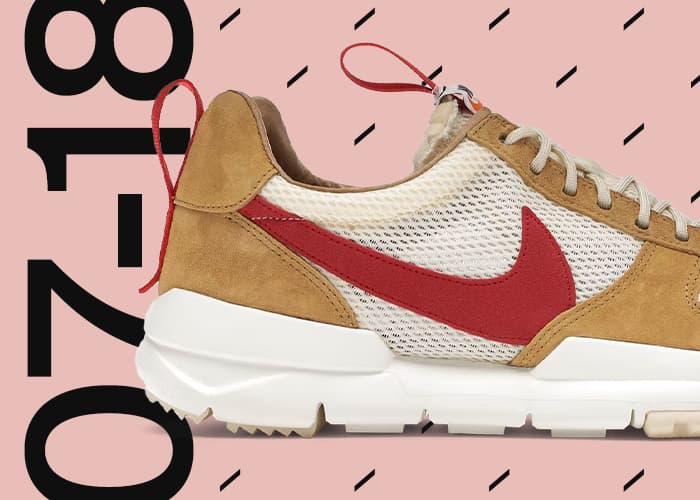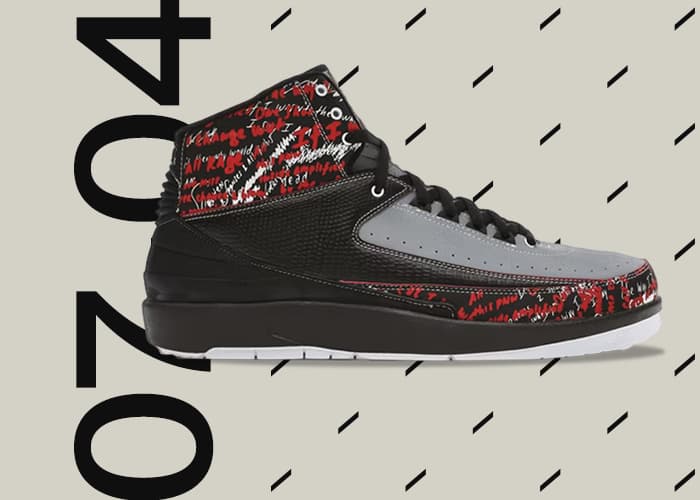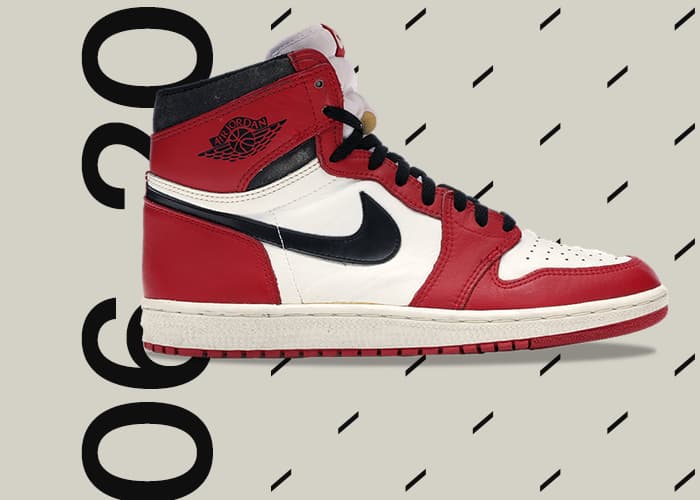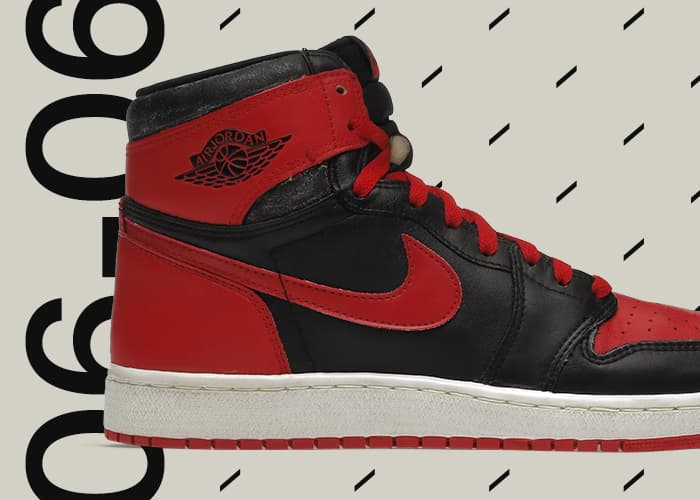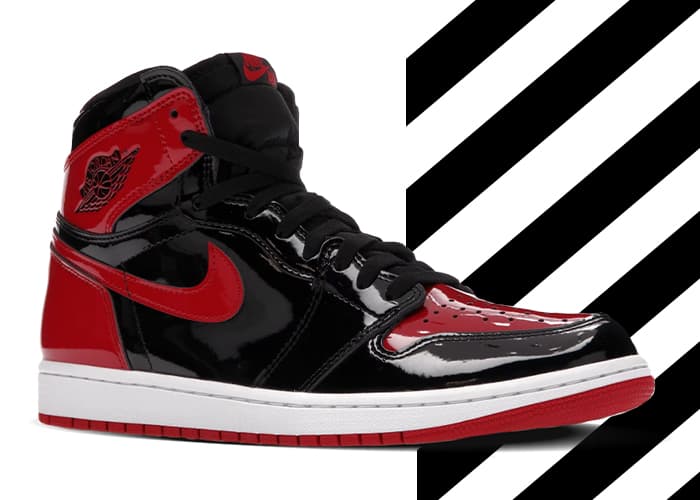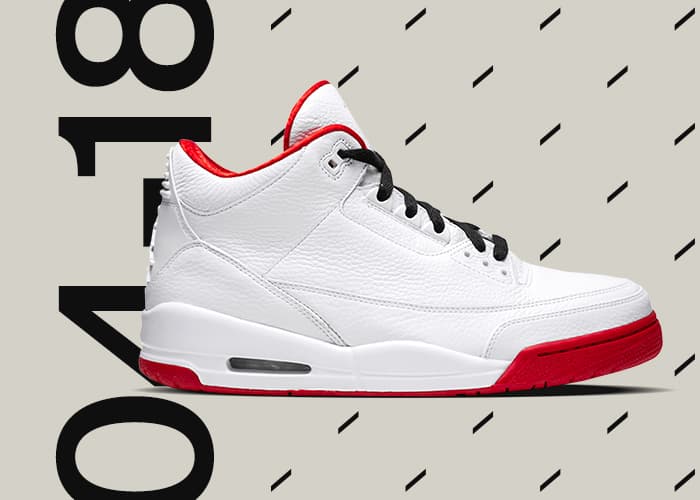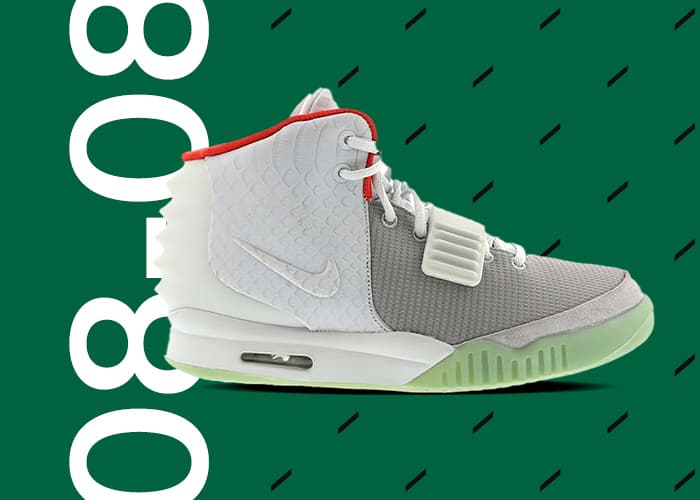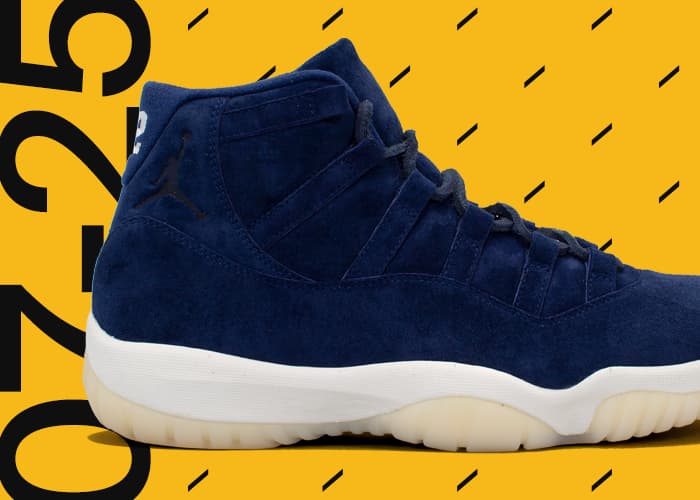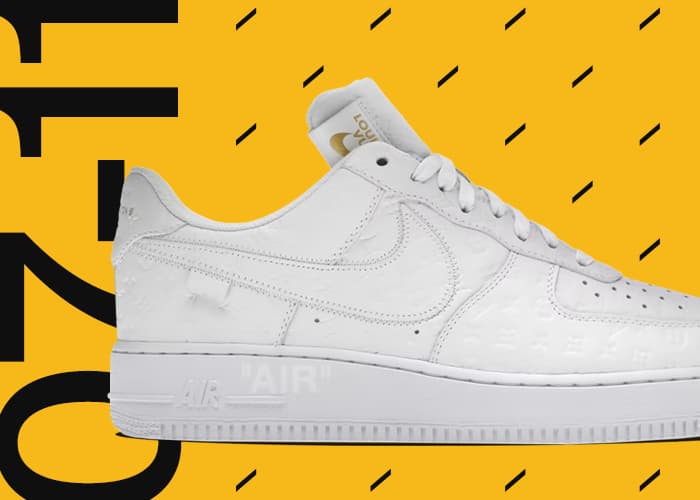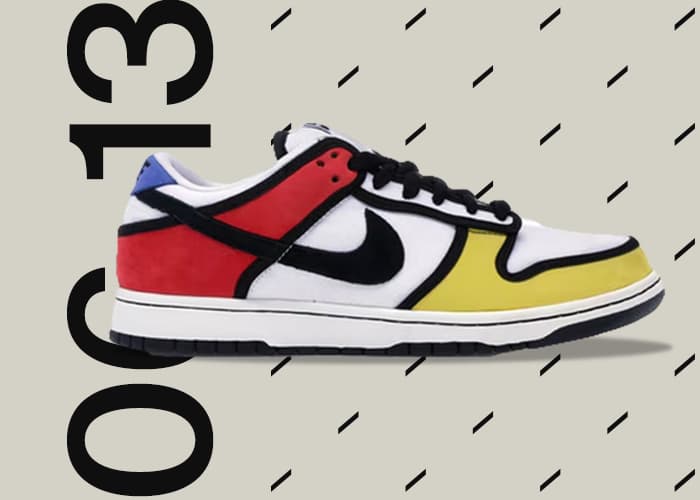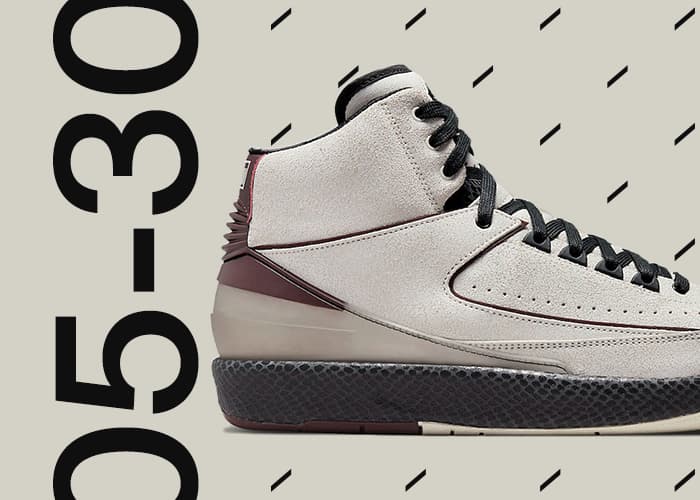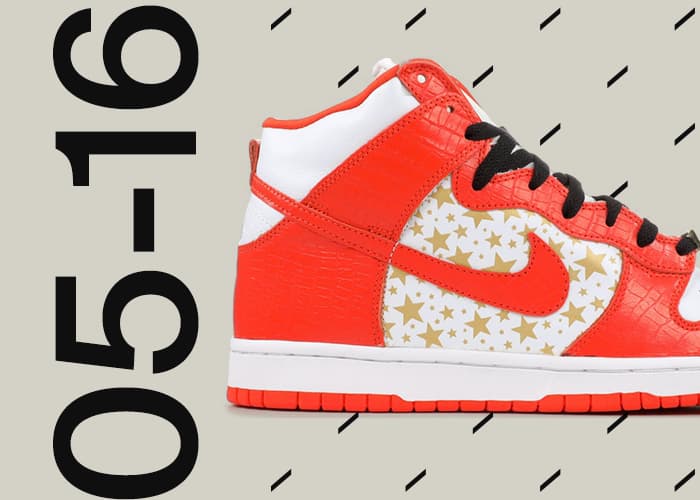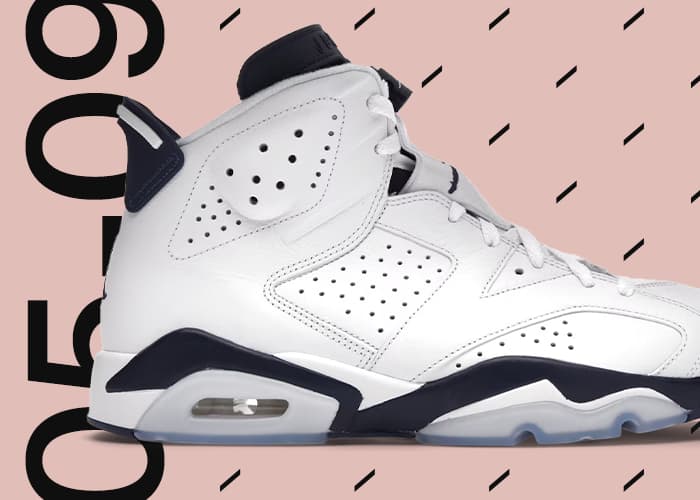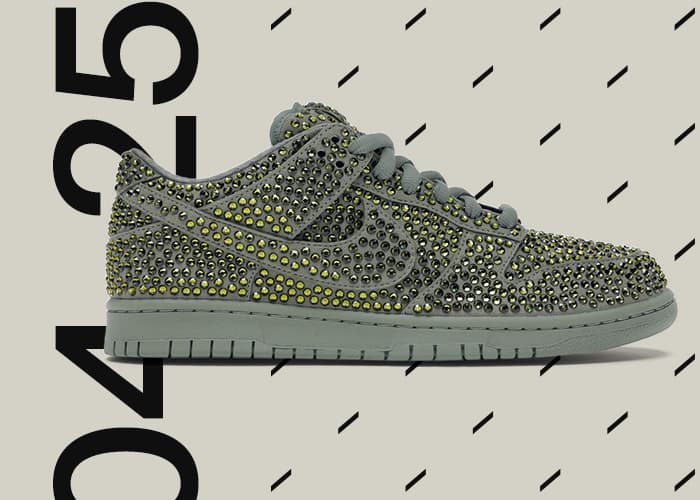A lot can change in four decades. The music we listen to, the clothes we wear, the stories we tell – they all circulate in trends, resurfacing time and time again without warning. While everything else changes in these cycles, one thing remains the same: the Nike Air Force 1 is always in style.
The Air Force 1 is timeless, a true marvel in current culture. Its simple design has never gone out of style and it continues to reach new audiences, regardless of age or region. With a strong foothold in the zeitgeist, it’s important to know how the Air Force 1 has retained its popularity through generations without having to adapt to the world around it.
There is enough Air Force 1 history to fill a few books, but we put together a crash course with all of the Nike Air Force 1 information you need as you search for your next pair.
Here is everything you need to know about the Nike Air Force 1.
When Did the Air Force 1 Release?

1982 Nike Air Force 1 Ad
The Nike Air Force 1 originally released in 1982 as the first basketball shoe in Nike’s history to feature Air technology. For the next two years, it was distributed in high-top and low-top variations, and both spread like wildfire throughout the sport. Then in 1984, the Air Force 1 was discontinued.
It’s hard to imagine Nike discontinuing a model that we know now as one of the most renowned silhouettes in sneaker history, but back then Nike was focused on innovation in their performance lines and quickly replaced old designs once they developed better technology. When new basketball shoes like the Nike Air Ship came out in 1984, the Air Force 1 seemingly became obsolete – at least on the basketball court.

Nike Air Force 1 Color of the Month Program; Image by Nike
In cities like Baltimore and New York City, the Nike Air Force 1 took on a second life as a popular casual sneaker. Demand for the shoe traveled from city to city on the East Coast and eventually, Baltimore retailers like Downtown Locker Room, Cinderella Shoes, and Charley Rudo Sports put pressure on Nike to bring back the beloved silhouette. The Air Force 1 made its return in 1986 and has been available ever since.
Uptowns vs. Downtowns
Airs, Lows, Forces, and Whites are all common monikers for the Air Force 1 today, but one of the most renowned bynames that has stuck with the silhouette since its early climb to stardom is simply Uptowns.
The Uptown nickname is derived from the AF1s popularity in the 90s in boroughs like Harlem and the Bronx in New York City. It was known that if you were looking to purchase the newest pairs, one would have to take the train uptown.

The Air Force 1 Downtown; Image by Sneaker Files.
While their names are similar, Uptowns and Downtowns are not the same. The Air Force 1 Downtown is a less popular, slimmed-down version of the Uptown that debuted in 2012. Uptowns are the classics, Downtowns are a modified iteration.
Key Colorway: The All-White Air Force 1
A crispy pair of all-white Air Force 1s are the ultimate staple piece. East Coast street culture brought the colorway to stardom, and now it is nearly impossible to go anywhere without spotting a pair of all-whites.
The Nike Air Force 1 Low ‘07 White is a beloved colorway in the AF1 line because of its versatility. They can adapt to any outfit, environment, occasion, and even serve as a blank canvas for artists who are looking to make their pair stand out. There are endless possibilities when it comes to a pair of white AF1s.
Why Are Air Force 1s So Popular?
After nearly 40 years on the market, the Nike Air Force 1 is still one of the most popular sneakers for several main reasons.
For starters, it is the first model in Nike’s history to return to production due to consumer demand, making it a true shoe of the people. Secondly, it can be purchased for $100 or less in a variety of retail settings across the world, broadening its accessibility. Also, the art of collaboration has introduced the Air Force 1 to new audiences. Limited edition releases with key players in pop culture like Travis Scott, G-Dragon, and Virgil Abloh have created excitement around the AF1 for new enthusiasts that might not have seen them as hype previously.
There are plenty of other reasons why the Air Force 1 has become an icon, but for the purpose of this buyer’s guide, we decided to point out the factors that we feel all AF1 shoppers should know about.
How Much Are Nike Air Force 1s?
At the retail level, Nike Air Force 1s cost $90 for low-top versions, $95 for mid-tops, and $100 for high-tops. Most general release colorways are easy to purchase for retail, and in some cases, they can sell for below their retail price on StockX. But other, more limited AF1 releases are priced more like investments or fine art than wearable shoes, and our data proves it.

The infographic above shows the most expensive Air Force 1s on StockX. As you can see, buyers are valuing rare Air Force 1s as an alternative asset class, and rightfully so. For example, the most expensive pair on this list, the Nike Air Force 1 KITH, was only given to friends and family of KITH. The extreme rarity and historical importance of this pair has contributed to its near $7,300 average price, a sign that Air Force 1s are often more than just sneakers.
The Takeaway
The Nike Air Force 1 will always be the people’s champ. Street culture and avid enthusiasts are the reason the silhouette was revived and cemented as an essential product in Nike’s catalog.
While the AF1 has moments of hype due to collaborations with stars in our current culture, its staying power is best attributed to its accessibility and that means most pairs aren’t monetary investments, they’re style investments. Sure, there are a fair number of colorways that go for stratospheric premiums, but a majority of Air Force 1s are an affordable staple piece ready to be added to your rotation.
If you are looking for a versatile silhouette that will always be in style, the Nike Air Force 1 is more than a viable option. It’s essential.


